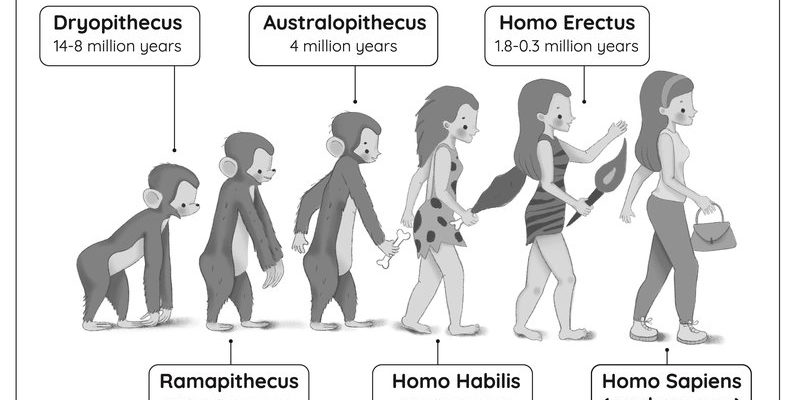
Locusts are a type of short-horned grasshopper belonging to the family Acrididae. Interestingly, they can switch from a solitary phase to a gregarious phase—essentially changing their behavior and appearance based on their population density. This adaptable nature not only makes them unique but also presents interesting challenges for agriculture and human societies over the centuries. Let me explain how these remarkable creatures have transformed throughout history.
Origins of Locusts
The story of locusts begins millions of years ago. Scientists believe that grasshoppers, the ancestors of locusts, first appeared about 300 million years ago during the Carboniferous Period. What’s neat here is that these early insects were not too different from the locusts we see today.
As climates changed and the earth transformed, grasshoppers adapted to various environments. Locusts branched off from other grasshopper species as they developed the ability to form swarms. This gregarious behavior is thought to have given locusts an advantage by enhancing their survival during times of food scarcity. So, you might wonder, how exactly did they manage this?
Behavioral Adaptations
The transformation from solitary to gregarious behavior is triggered by several factors, including population density and changes in habitat. When food becomes plentiful, they prefer to stay solitary. But, as populations grow and resources dwindle, they enter a gregarious phase. Here’s how that works:
- Color Change: Solitary locusts are typically green or brown but become more colorful—often yellow or black—when swarming.
- Increased Aggression: In swarms, locusts exhibit more aggressive behavior, which helps protect the group from predators.
- Enhanced Reproductive Rates: The gregarious phase leads to an increase in reproductive rates, ensuring the swarm can grow rapidly.
You can think of this adaptability like a team coming together when facing a challenge—uniting efforts to overcome obstacles.
Historical Impact of Locusts
Throughout history, locusts have left their mark on various cultures and civilizations. From the biblical plagues to modern agriculture, these insects have profoundly influenced human societies.
One of the most notable historical references to locusts is in the Bible. The Book of Exodus describes locusts as one of the ten plagues that struck Egypt. This biblical narrative highlights how locusts were seen not just as pests, but as symbols of destruction and divine wrath.
In medieval times, swarms of locusts devastated crops across Europe. Imagine the panic of farmers watching their whole livelihood swept away in a matter of days! These events led to significant agricultural innovations as people sought to protect their crops and find ways to manage locust populations.
Modern Challenges
Today, locust swarms remain a significant agricultural threat, particularly in regions like Africa and the Middle East. As climate change alters rainfall patterns, it affects locust breeding and behavior. Farmers often face unpredictable invasions, leading to food insecurity for many communities.
Luckily, scientists and agricultural experts are working to develop strategies to predict and manage locust populations. They use satellite imagery and weather data to forecast swarm formations, helping farmers prepare for potential invasions.
The Evolution of Swarming Behavior
So, why do locusts form these massive swarms? It’s all about survival. Swarming behavior evolved as a defensive mechanism against predators. By coming together in large numbers, locusts can confuse and deter potential threats.
But there’s more to it. When locusts swarm, they can cover vast distances in search of food. Some swarms have been recorded traveling over 90 miles in a single day! This ability to move quickly in search of resources is crucial for their survival, especially during harsh conditions.
Impact on Ecosystems
While locusts can wreak havoc on crops, they also play essential roles in their ecosystems. During the gregarious phase, they help aerate the soil with their movements, which can benefit plant growth. Additionally, they serve as food for a variety of predators, including birds and reptiles. So, while they may be infamous for their destruction, locusts are a vital part of the ecological balance.
Research and Control Methods
Over the years, researchers have developed various methods to control locust populations. From traditional methods like trapping to advanced techniques using biopesticides, there’s a variety of approaches. Here are some of the popular control methods:
- Chemical Control: Spraying insecticides can help manage locust swarms, but this method often raises concerns over environmental impacts.
- Biological Control: Scientists are exploring natural predators, like fungi, to help reduce locust populations without harming the ecosystem.
- Monitoring and Forecasting: As mentioned earlier, satellite technology is incredibly valuable for predicting swarm movements. It allows for timely interventions.
It’s fascinating to see how technology and nature can work together to address the challenges posed by these insects.
The Future of Locust Management
As climate change continues to alter habitats and weather patterns, understanding locust behavior will be crucial. Researchers are committed to finding sustainable solutions to mitigate the impact of locust swarms on agriculture and communities. Investing in innovative research and collaborating across borders will be essential in tackling this ever-evolving challenge.
The history of locusts is a whirlwind journey through time, showcasing their impressive ability to adapt and survive. From their origins millions of years ago to their significant impact on agriculture today, these insects continue to fascinate and challenge us. While we might see them as pests, understanding their role in ecosystems and human history adds depth to our perspective.
Honestly, as we face a future with changing climates, the importance of studying locust behavior cannot be overstated. By learning from their evolution and implementing effective management strategies, we can better prepare for the challenges ahead. So next time you hear about locusts, remember there’s a whole story behind those tiny creatures, and it’s one worth knowing!

